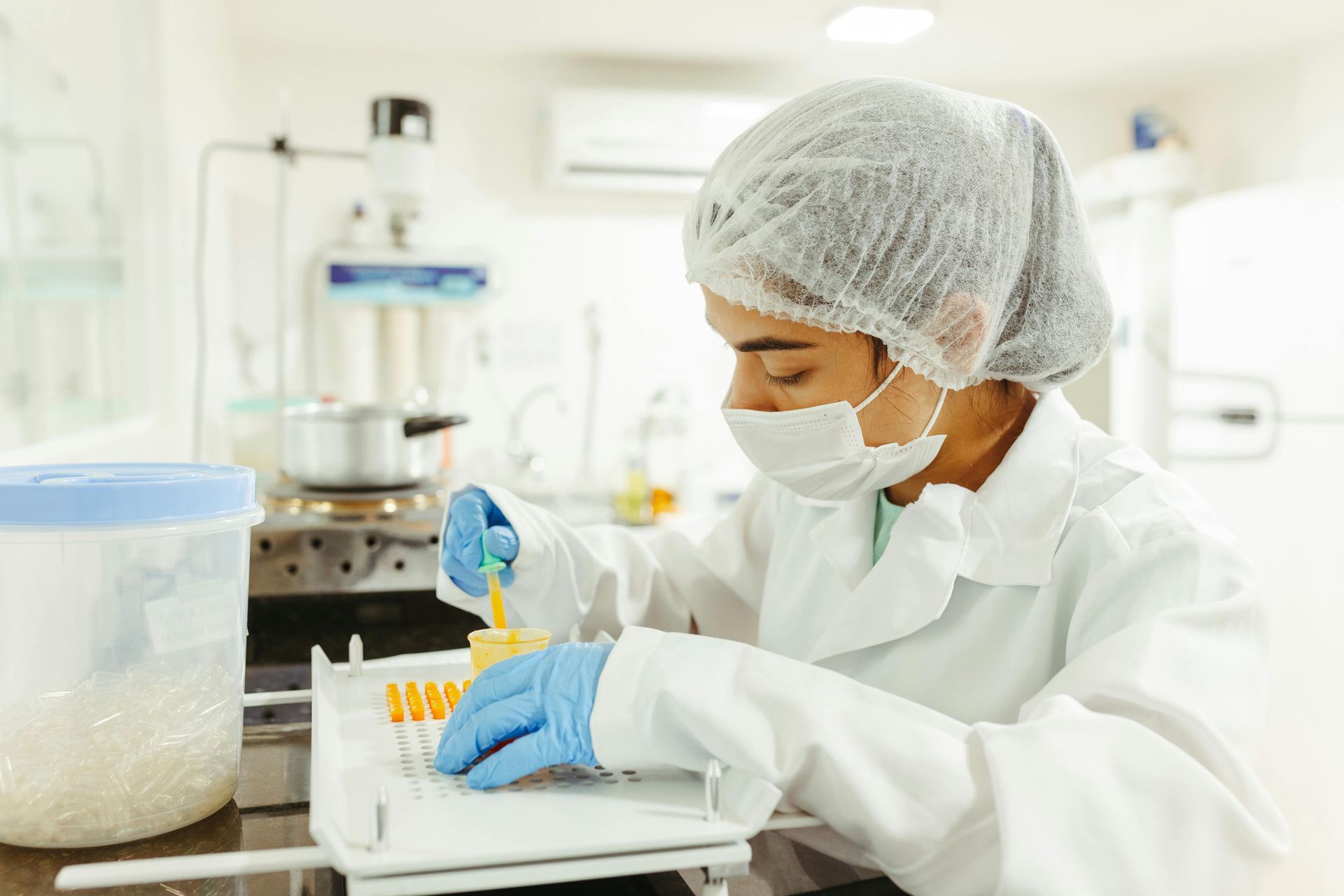Should the Pharmaceutical Industry Address Overseas Manufacturing Amid COVID-19?
Recent reports from the United States Food and Drug Administration (FDA) have shown that only 28% of manufacturing for active pharmaceutical ingredients occurs within the nation. While international collaboration on commerce and health are not uncommon, the recent COVID-19 coronavirus pandemic has introduced concerns on whether the country should remain reliant on external supply chains.
United States Senator Chris Coons even stated that domestic medical manufacturing should become the new focus as global supplies become scarce amid the virus. He also emphasized the importance of a federal office for pandemic preparation. What exactly is the situation for domestic production of pharmaceuticals, and what changes should be made?
A Push to Overseas Production
In the past, American medicines were produced domestically, but manufacturing has recently shifted to other countries. The FDA has measured about a 10% decrease from 2013 to 2019 in domestic facilities according to a study by Boston University and the Massachusetts Institute of Technology.
For instance, Abbott Laboratories, a company that operated from the 90s to the 2000s, had shut down several plants within the nation to outsource the labor elsewhere.
Reasons for this general trend include different tax policies, cheaper labor, or lower environmental laws. Many medical businesses have merged and purchased other companies as well, contributing to the move.
The Problem
COVID-19 presents a significant issue with global supply chains, pharmaceutical ones included. The need for social distancing can interrupt work schedules, and the increased demand for supplies can cut into inventory.
Most important, there’s a chance that exports may require restriction or even a complete stall. In these cases, it will be difficult to obtain the medication and supplies necessary to fight the virus.
The Issue with Solving It
Experts agree that moving manufacturing back to American soil will be expensive and time-consuming. Figures have ranged into the billions of dollars and usually involve a couple decades at least.
Additionally, there are genuine reasons to have overseas manufacturing in some cases. During pandemics, a company can shift its operations from one nation to another in case infections plague one facility.
Government Action
The government-led Biomedical Advanced Research and Development Authority (BARDA) may spearhead new developments and vaccines for COVID-19. Congress allocated $3.5 billion toward the organization earlier this year, a significant increase from previous fundings.
Among its activities are projects to fund research into experimental products and building domestic networks of production facilities. It also focuses on contributing to the National Pharmaceutical Stockpile, the United States’ national inventory of essential medical supplies, antibiotics, and vaccines.
BARDA has begun supporting Johnson & Johnson and Moderna in their efforts to not only develop a vaccine but also scale up manufacturing to accommodate the millions of doses necessary.
Stay up to Date With Proper Medical Education
You can do your part by investing in professional medical training for your organization. Whether it’s for adherence to compliance legislation or just additional knowledge for staff, consider trying out CfPIE’s selection of industry-grade coursework with topics ranging from medical devices to pharma and biotech.
Are you interested in our pharmaceutical and biotech training programs? Contact CfPIE today by calling 1-610-648-7550 or emailing [email protected] if you’d like to learn more.
Blog Categories
Stay Informed
Have Questions?
You will be able to find answers to most frequently asked questions here
Since 2001 CfPIE has
Check Out Our Life Science Training Courses.
Need help finding the right life sciences training courses? We can help you make the right choice based on your company's needs.
- AMDE, PK/TK & Drug Metabolism in Drug Discovery and Development
- Advanced Topics in Biostatistics for Non-Statisticians
- Analytical Chemistry Principles for Pharmaceutical Scientists
- Analytical Method Validation for Biologics, Biopharmaceuticals and Other Therapeutic Products
- Aseptic Processing in the Manufacture of Biotech and Pharmaceutical Products
- Auditing and Qualifying Suppliers and Vendors
- Best Practices for an Effective Cleaning Validation Program
- Biostatistics for Non-Statisticians
- CMC Regulatory Compliance Strategy for Cell & Gene Therapy Medicines
- CMC Regulatory Compliance Strategy for Recombinant Proteins, Monoclonal Antibodies, & Biosimilars
- Change Control - GMP Requirements and FDA Enforcement
- Cleanroom Fundamentals - Regulation, Science, Design, Practice, Operation & Management
- Clinical Document Management: A Trial-by-Trial Compliance Approach
- Clinical Trial Project Management, Phase 1-4 Best Practices
- Comprehensive Overview of FDA Regulatory Compliance for Drug and Biotech Products
- Computer System Validation
- CRO, CDMO and Non-Clinical Vendor Management Fundamentals
- Development and Validation of Bioanalytical Assays for Biologics: Quantification (PK) and Immunogenicity Assays
- Effective Document Management for Pharma, Biotech & Medical Device
- Effective Internal and External Quality Assurance Auditing for FDA Regulated Industries
- Ethics in Research - Values for Responsible Conduct of Research
- European Regulatory Procedures - EMA & National Requirements
- FDA Inspections - What Regulators Expect and How to Prepare
- GCP Audits - Best Practices for Ensuring Compliance & Detecting Fraud and Misconduct in Clinical Trials
- GMP Training for the QC Laboratory
- Good Clinical Practices (GCP) & Risk Based Monitoring - Understanding and Implementing Current Global Requirements
- Good Laboratory Practice (GLP) for Nonclinical Laboratory Studies
- Good Manufacturing Practices Training | GMP Course
- Human Error Prevention (HEP) - Risk Factors and Strategies
- Implementing and FDA Compliant Stability Program
- Integration of Risk Management Principles and Activities into the Pharmaceutical Quality System
- Intro to Medical Device Submission - 510(s)s, PMAs & Exemptions
- Introduction to Medical Combination Products
- Introduction to Statistical Analysis of Laboratory Data
- Introduction to Vaccines - CMC Regulatory and Quality Aspects
- Laboratory Equipment Validation and Qualification
- Lyophilization Technology - Application of Scientific Principles
- Marketing & Advertising of Pharmaceutical & Medical Devices
- Medical Device Process Validation Training for Professionals
- Medical Devices: Developing Effective Post Market Surveillance and Compliant Handling Systems
- Molecular Biology Techniques - Applications in the Biotechnology and Pharmaceutical Industries
- OTC Drug and Personal Care Product GMP & FDA Regulation
- Oncology Drug Development Course - A Comprehensive Overview
- Overview of FDA Regulatory Compliance for Medical Devices
- Overview of the New EU Medical Devices Regulations: MDR, IVDR, CE Mark and Compliance, QMS Fundamentals
- Pharmaceutical Root Cause Analysis of Failures & Deviations - Developing an Effective CAPA Strategy
- Preparation of FDA Submissions and Communicating with the FDA
- Preparing the CMC Section for NDAs/INDs/CTDs
- Process Validation for Drugs and Biologics
- QbD - Product & Process Optimization using Design of Experiments
- Quality Assurance/Quality Control for Biologics and Biopharmaceuticals
- RNA Biotechnology - An Introductory Course
- Specifications for APIs & Pharmaceutical Drug Products
- Technical Writing for Pharma, Biotech and Med Devices
- The Drug Development Process from Concept to Market
- US Medical Device & Quality Systems Regulations - Design Controls & Validation
- Writing Effective SOP and Other Process Documents
ABOUT US
The Center for Professional Innovation and Education (CfPIE) provides technical training for Pharmaceutical, Biotech, Medical Device and Skin/Cosmetics professionals. CfPIE offers more than 350 class sessions annually across 80 course titles in multiple formats, such as classroom, on-site, and certification programs.
USEFUL LINKS
STAY INFORMED
Your privacy and trust are important to us. We collect your information only for operational and advisory purposes. We do not and will not sell your private information to a 3rd party. By agreeing to this policy, you are giving us permission to contact you about our services and courses.
All Rights Reserved | CfPIE Inc. | Our courses and materials are copyrighted by CfPIE, Inc. and may not be used or reproduced without the written permission of CfPIE, Inc. management. | In partnership with CCC


